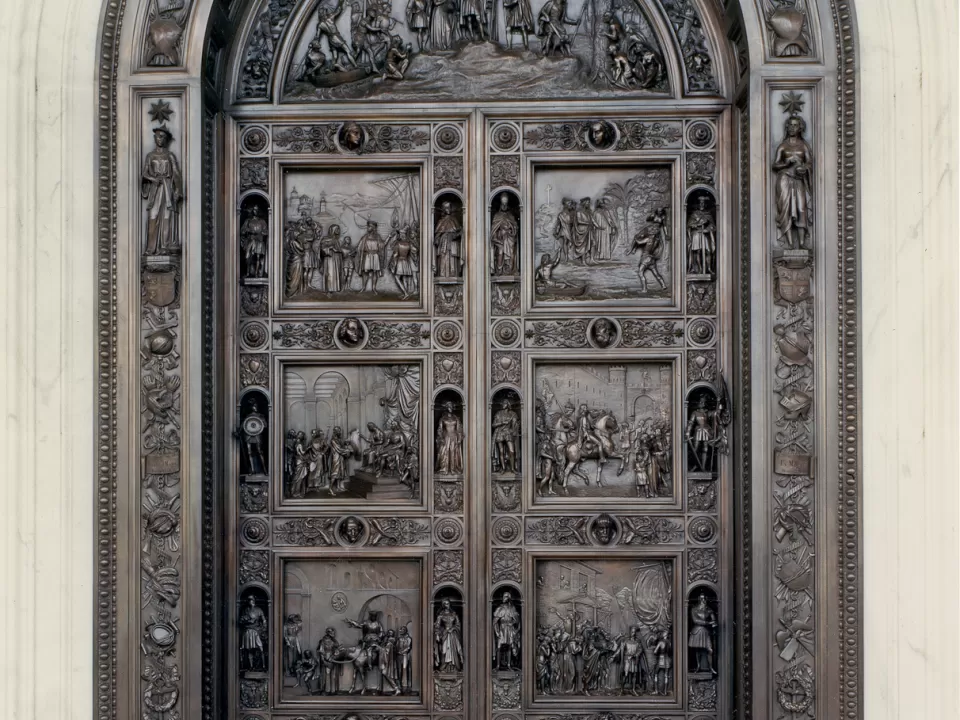Architect of the Capitol employees are responsible for the care and preservation of more than 300 works of art, architectural elements, landscape features and more.
Browse our pieces below or learn more about the artists, collections and subjects.
Filter Results
Displaying 61 - 72 of 337
Columbus Doors
The Columbus Doors, also called the Rogers Doors or Rotunda Doors, stand imposingly at the main entrance to the U.S. Capitol Building, almost 17 feet high and weighing 20,000 pounds. Designed by American sculptor Randolph Rogers, each scene depicting the life of Christopher Columbus is finely modeled. The doors were installed in 1863 and moved to their present location in 1961 following the extension of the East Front of the Capitol.
Compass Stone
This white marble "compass stone" in the floor of the Crypt marks the center of the U.S. Capitol and is the point where Washington, D.C., is divided into quadrants: northeast, northwest, southeast and southwest.
Corinthian Columns
Corinthian columns are the most ornate, slender and sleek of the three Greek orders.
Corncob or Cornstalk Columns and Capitals
Some of the oldest and most famous interior features of the Capitol are located near the entrance to the Old Supreme Court Chamber. These six corncob columns, designed ca. 1808 by Benjamin Henry Latrobe, are among the most unusual and significant architectural works of the early Republic.
Cortez and Montezuma at Mexican Temple
The Spaniard Hernando Cortez, conqueror of Mexico, enters the Aztec temple in 1519. He is welcomed by Emperor Montezuma II, who thought Cortez was a god. The calendar stone and idols are based on sketches that artist Constantino Brumidi made in Mexico City. (1520)
Covered Wagons
Two different types of covered wagons are shown, along with livestock and a family of settlers cooking a meal over an open fire.
Cox Corridors Murals
Designed by renowned artist Allyn Cox (1896-1982), three corridors on the first floor of the U.S. Capitol's House wing are elaborately decorated with wall and ceiling murals that include historical scenes, portraits and maps related to the development and growth of the United States.
Crawford W. Long Statue
This statue of Crawford W. Long was given to the National Statuary Hall Collection by Georgia in 1926.











